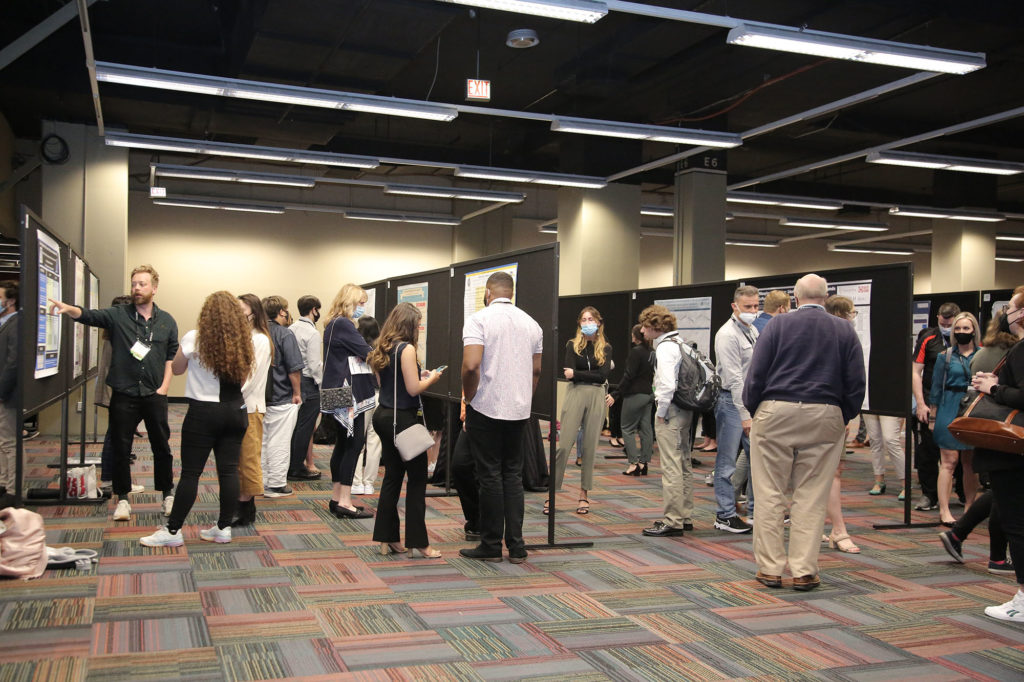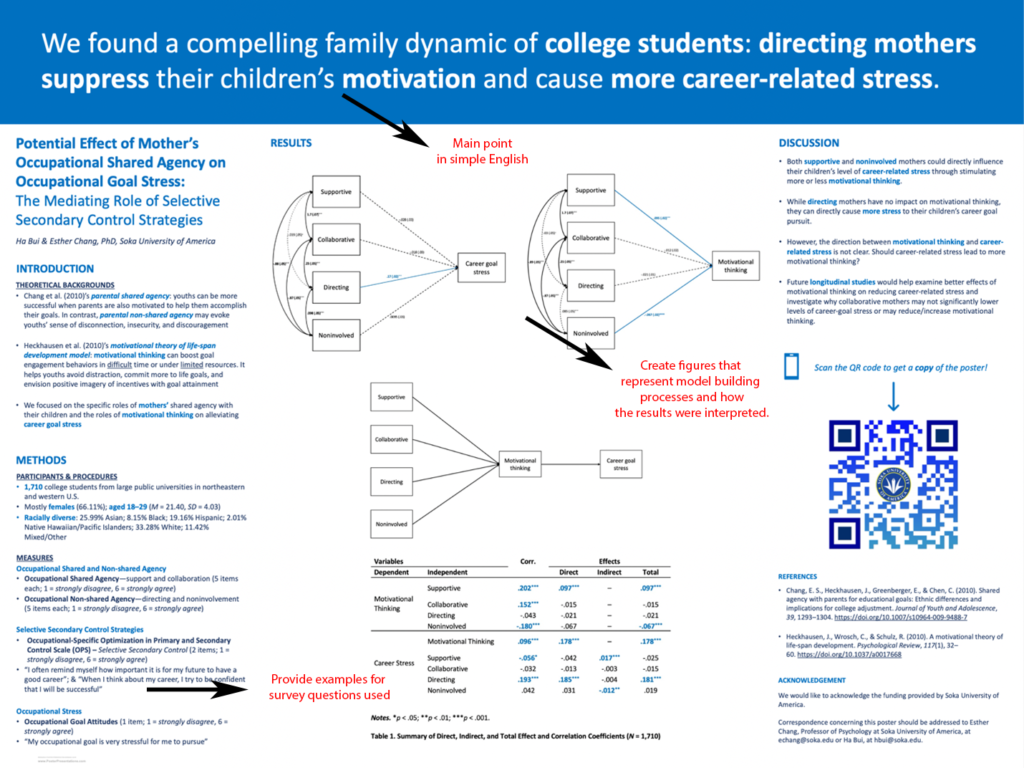Practice
Communicating Psychological Science: 5 Tips for Creating an Effective Poster Presentation


The first time creating a scientific poster to present at psychological conferences can be confusing and nerve-racking for many, especially undergraduate students. If you are studying or working at a higher education institution, the university’s writing center or libraries will have a lot of resources on how to prepare a poster, including specific examples (e.g., New York University, 2022). If you don’t have access to these resources, there is a multitude of cost-free online information that you can use. As an early-career student researcher and Emerging Scholar Award winner from the 2022 APS Convention, I will provide some personal experiences and advice to create an effective poster.
Think of a poster as a creative visual outlet!
When planning your poster, visualize the methods, designs, and results in figure forms like graphs, plots, or charts, rather than in text form like an essay or a manuscript. You should have fun, enjoy the process, and explore your artistic skills! Although some conferences may have specific requirements for font size, font color, or the number of figures/tables you can include, you can still express your unique taste through mapping the layout that fits your study. For instance, in experimental designs, if your results are not significant but the methods are thorough and thought-provoking, you can save more space to draw the flowcharts that explain the procedures or include the materials that you showed the participants. My first poster was presented at the 2022 Western Psychological Association Convention (Figure 1), and I believe the results were the most exciting part, so I placed them in the center. This poster is not my best draft (and you’re not expected to master anything in the first try!), but I think you can learn a lot from my shortcomings to improve your own presentation.

View your poster from audience’s perspectives.
Consider the potential audience when presenting your poster. Do you have an intriguing title that can capture their first impression? Is the poster readable with the appropriate font size and colors? You would not want to make a poster with 10 different colors or have walls of texts with a font size of 12 on a 36 x 48 poster (even size 20 is small, in my opinion). In addition, consider your audience’s levels of interest and information retention. Try to include only the main results and/or the key takeaway messages that people can easily remember after 2 to 5 minutes of listening to your presentation. It’s always tempting to put every detail into your poster, yet the goal is not to show how much you know, but to inform the audience about a phenomenon and foster discussions about the findings, future directions, or related studies.
Present with simple words and relatable narratives.
To make your study more memorable, try to use simple, plain English and avoid abbreviations when presenting your results, as not everyone in your audience may know the technical jargon. Even if you’re presenting to specialists in the field, it would be useful to explain the measures you used in your study. For example, if I were to present to a general audience, I would use ‘thinking processes’ instead of ‘cognition.’ Also prepare some narratives or personal comments and analogies to transform an abstract topic into a concrete image that the audience can remember. For instance, if you study motivation and goal engagement strategies, try to ask the audience about some of their academic, career, or health-related goals and habits to start the conversation.
Use social media to communicate your study.
In addition to creating and presenting a poster, share your findings on social media sites like Twitter, LinkedIn, Instagram, Facebook, and your personal blog! Practice open science as a movement, or in Hagger’s (2022) view, a ‘mindset’ to increase accessibility and future research contributions. To further communicate your own research publicly, you can also include a QR code in your poster that links to a digital copy of the poster, a short video presentation of your study, and your personal contacts. This practice can be especially helpful if you are a student or an early-career researcher, as you will increase your presence in the academic community and welcome potential feedback from senior researchers. And having your first conference poster presented already makes you a great example for other junior researchers.
Stay confident and open-minded!
Don’t be discouraged if you encounter nonsignificant results or harsh criticisms! Research is about nonstop revisions, so you always have opportunities to adjust your methods, designs, and analyses (Brock, 2019). People have different preferences over how psychological science research should be conducted and how posters should be presented, so don’t worry too much if your results are not broadly significant or if people have strong opinions about your study approach. Nonsignificant results are meaningful themselves! Be open-minded and learn about new topics, but also believe in yourself and your ability to do research.
Feedback on this article? Email apsobserver@psychologicalscience.org or login to comment.
Related content we think you’ll enjoy
-

Communicating Psychological Science: Why You Should Write an Op-Ed—and How to Start
Widely published researchers Lara B. Aknin and Elizabeth W. Dunn provide their insights and advice regarding writing and submitting op-eds to the media. Visit Page
-

Latest PSPI: The Science of Visual Data Communication: What Works
References
Brock, J. (2019, September 16). 5 tips for dealing with non-significant results. Nature. https://www.nature.com/nature-index/news-blog/top-tips-for-dealing-with-non-significant-null-results
Hagger, M. S. (2022). Developing an open science ‘mindset.’ Health Psychology and Behavioral Medicine, 10(1), 1–21. https://doi.org/10.1080/21642850.2021.2012474
New York University. (2022, July 20). How to create a research poster. https://guides.nyu.edu/posters





APS regularly opens certain online articles for discussion on our website. Effective February 2021, you must be a logged-in APS member to post comments. By posting a comment, you agree to our Community Guidelines and the display of your profile information, including your name and affiliation. Any opinions, findings, conclusions, or recommendations present in article comments are those of the writers and do not necessarily reflect the views of APS or the article’s author. For more information, please see our Community Guidelines.
Please login with your APS account to comment.